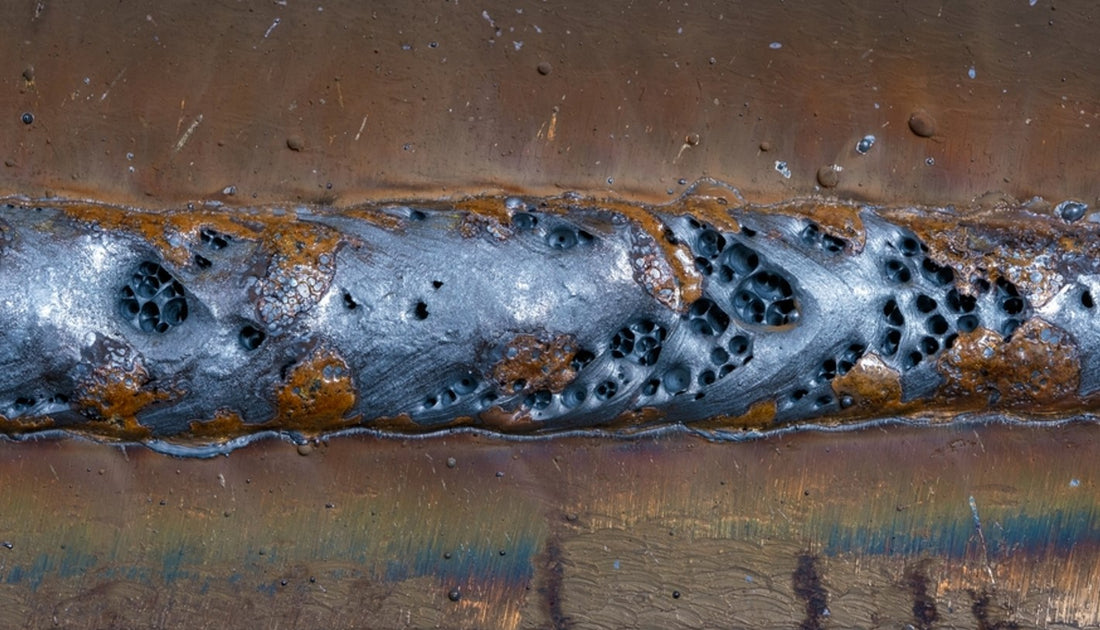Discover What is Porosity in Welding and Its Result on Architectural Integrity
Discover What is Porosity in Welding and Its Result on Architectural Integrity
Blog Article
Untangling the Secret of Porosity in Welding: Tips for Minimizing Flaws and Taking Full Advantage Of Quality
In the elaborate world of welding, porosity stays a consistent obstacle that can substantially influence the top quality and integrity of welded joints. As we dive right into the midsts of porosity in welding, uncovering the tricks to its avoidance and control will be paramount for professionals seeking to grasp the art of top notch weldments.
Understanding Porosity in Welding
Porosity in welding, a common issue run into by welders, describes the visibility of gas pockets or voids in the bonded material, which can jeopardize the stability and top quality of the weld. These gas pockets are commonly entraped throughout the welding procedure because of numerous aspects such as inappropriate protecting gas, infected base products, or inaccurate welding specifications. The development of porosity can weaken the weld, making it at risk to fracturing and rust, eventually bring about structural failings.
Understanding the source of porosity is crucial for welders to effectively prevent its incident. By identifying the importance of maintaining correct gas securing, guaranteeing the cleanliness of base materials, and optimizing welding settings, welders can significantly reduce the probability of porosity development. In addition, using methods like preheating the base material, using appropriate welding methods, and performing thorough assessments post-welding can better aid in lessening porosity flaws. Generally, a thorough understanding of porosity in welding is crucial for welders to generate premium and sturdy welds.

Usual Causes of Porosity
When evaluating welding procedures for prospective high quality issues, recognizing the usual reasons of porosity is crucial for preserving weld honesty and protecting against structural failures. Porosity, identified by the visibility of dental caries or voids in the weld steel, can dramatically jeopardize the mechanical buildings of a welded joint.
Another common root cause of porosity is the existence of dampness and contaminants on the surface area of the base steel or filler material. When welding materials are not appropriately cleaned or are revealed to high degrees of moisture, the evaporation of these contaminants during welding can produce gaps within the weld bead. In addition, welding at inappropriate parameters, such as exceedingly high travel rates or currents, can produce too much turbulence in the weld swimming pool, capturing gases and creating porosity. By dealing with these typical causes with correct gas protecting, material preparation, and adherence to optimal welding specifications, welders can lessen porosity and boost the high quality of their welds.
Strategies for Porosity Avoidance
Implementing effective safety nets is critical in decreasing the event of porosity in welding processes. One technique for porosity prevention is making certain correct cleansing of the base steel before welding. Impurities such as oil, grease, rust, and paint can result in porosity, so detailed cleaning using appropriate solvents or mechanical methods is necessary.

Utilizing high-grade filler products and shielding gases that are ideal for the base metal and welding procedure can substantially lower the risk of porosity. In addition, keeping correct welding specifications, such as voltage, current, travel speed, and gas circulation rate, is essential for porosity avoidance.
Additionally, using proper welding strategies, such as maintaining a regular travel speed, electrode angle, and arc size, can aid prevent porosity (What is Porosity). Appropriate training of welders to guarantee they comply with ideal methods and top quality control procedures is likewise crucial in reducing porosity problems in welding

Ideal Practices for Top Quality Welds
One key method is preserving appropriate sanitation in the welding location. Completely cleaning up the workpiece and surrounding area before welding can help reduce these issues.
One more ideal practice is to meticulously select the ideal welding parameters for the certain products being joined. This includes establishing the appropriate voltage, present, take a trip speed, and protecting gas circulation rate. Correct parameter choice guarantees ideal weld penetration, fusion, and overall high quality. Moreover, using high-grade welding consumables, such as electrodes i thought about this and filler go to this site steels, can considerably influence the last weld top quality. Investing in premium consumables can result in more powerful, extra long lasting welds with fewer flaws. By adhering to these finest practices, welders can consistently generate premium welds that fulfill market requirements and surpass client assumptions.
Importance of Porosity Control
Porosity control plays a crucial function in guaranteeing the honesty and top quality of welding joints. Porosity, defined by the existence of tooth cavities or spaces within the weld steel, can substantially endanger the mechanical buildings and structural integrity of the weld. Extreme porosity weakens the weld, making it more vulnerable to breaking, rust, and general failure under functional tons.
Effective porosity control is necessary for maintaining the desired mechanical residential or commercial properties, such as toughness, ductility, and strength, of the bonded joint. What is Porosity. By decreasing porosity, welders can boost the overall high quality and reliability of the weld, ensuring that it fulfills the performance demands read the article of the intended application
In addition, porosity control is vital for attaining the preferred visual look of the weld. Too much porosity not just damages the weld but also diminishes its visual allure, which can be vital in industries where appearances are crucial. Proper porosity control methods, such as making use of the proper securing gas, managing the welding parameters, and making certain proper tidiness of the base materials, are crucial for producing top notch welds with minimal flaws.

Conclusion
Finally, porosity in welding is a common issue that can jeopardize the quality of the weld. By comprehending the reasons for porosity and carrying out appropriate avoidance methods, welders can decrease problems and achieve better welds. It is important to control porosity in welding to guarantee the stability and stamina of the final item. Implementing finest methods for porosity control is critical for accomplishing optimum welding outcomes.
Report this page